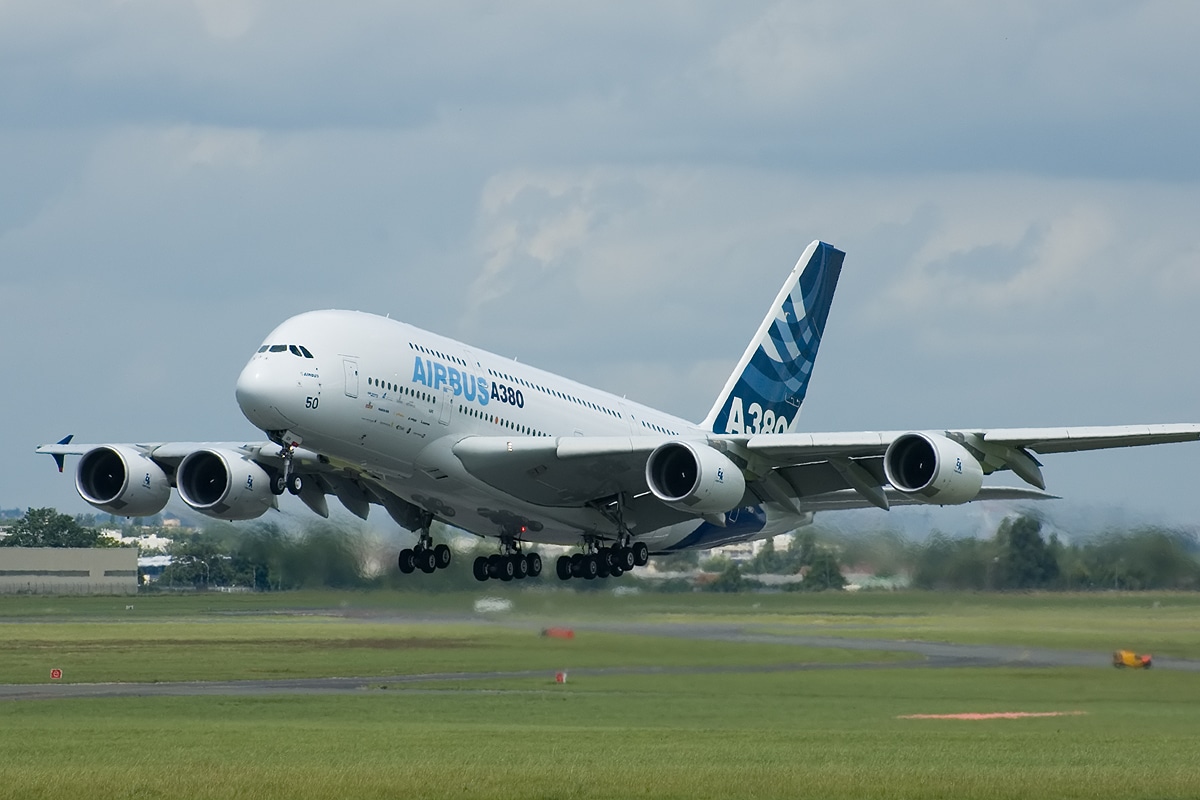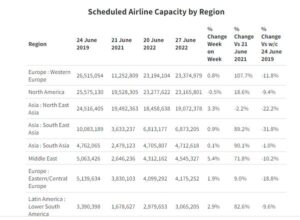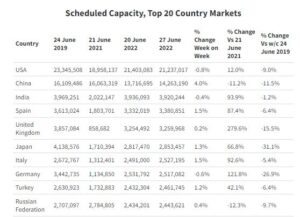Aerospace
The Airbus A380 is getting ready to fly again and Capacity Edges to 100 Million : OAG

The Airbus A380 is getting ready to launch once more, and capacity is approaching 100 million.
With the forthcoming Fourth of July vacations, will we pass the 100 million seat threshold next week when airline capacity has settled at 99.9 million seats? Possibly or not!
Last week, the IATA AGM came to a successful conclusion. Delegates were entertained by a local folk ensemble and performances by Christina Aguilera and Jennifer Lopez, who both travelled long distances to attend the event.
When the Dutch Government announced a 20 percent cut in movements at Amsterdam Schiphol, the staff members at the IATA Slot Conference in Seattle were busy. How on earth airports and airlines can create long-term plans with such impulsive decisions is beyond me.
Will Lufthansa and Etihad add the Airbus A380 to their fleets again?
According to reports, two airlines—Lufthansa and Etihad—are thinking of reintroducing the Airbus A380 to their fleets to get around upcoming supply issues. How rapidly things improve, and let’s hope that continues to be the case. Nine carriers will run just under 1,000 A380 flights this week, with Emirates accounting for 70% of those, British Airways for 9%, and Qatar Airways for a very hesitant 7%. In 2019, fourteen airlines operated more than 2,300 A380 services.
The recovery is still going strong, according to forward-looking airline capacity through the end of September. Despite a lower starting point, capacity declined by 7% in September 2019 compared to August, and this September is presently 4% below August. This shows ongoing optimism in the recovery. With almost 30% greater capacity and most likely above 85% of the 2019 level, September will be substantially stronger than last year, even after accounting for the probable drift of some capacity in the upcoming months.
Western Europe is once again at the top of the lists this week thanks to a shift of less than 1% in the two biggest markets in the world, at least until easyJet makes their announced capacity adjustments and other airlines modify their schedules. Given that public holidays typically have a minor negative influence on capacity and that the United States will be “celebrating” Independence Day next week, it is likely that the positions will not alter.
The Regional Markets in North Africa and the Middle East are Growing the Fastest
The fastest rising regional markets this week were in North Africa (+7%) and the Middle East (+5%), both of which reported gains of more than 75% over the same week last year. With the exception of North East Asia, every region in the world now has significantly more capacity operating than it did a year ago, and half of those regions report more than 50% growth. This is quite remarkable and explains why airlines are simultaneously running out of resources and frantically seeking out new aircraft.
Read more OAG report.

Aerospace
Boeing Transfers Rocket Stage to NASA, Paving Way for Human Moon Mission

Boeing has achieved a significant milestone by providing NASA with the second core stage of the Space Launch System (SLS) rocket.
This crucial component, crafted at NASA’s Michoud Assembly Facility (MAF), is set to propel the Artemis II crew into lunar orbit, marking humanity’s return to deep space after a 50-year hiatus.
The monumental Boeing-built rocket stage, the largest element of the Artemis II mission, will embark on a journey aboard the Pegasus barge, traveling 900 miles to NASA’s Kennedy Space Center.
Comparison of two legendary aircraft B777x vs B747 aircraft:Click here
Upon arrival, it will be meticulously integrated with other essential Artemis II components, including the upper stage, solid rocket boosters, and NASA’s Orion spacecraft within the iconic Vehicle Assembly Building. This intricate integration process is a vital step toward the eagerly anticipated Artemis II launch, slated for 2025.
“Boeing-built products helped land humankind on the moon in 1969, and we’re proud to continue that legacy through the Artemis generation,” remarked Dave Dutcher, vice president and program manager for Boeing’s SLS program. “Together, with NASA and our industry partners and suppliers, we are building the world’s most capable rocket and paving the way to deep space through America’s rocket factory in New Orleans.”
NASA, Lockheed Martin Reveal X-59 Quiet Supersonic Aircraft:Click here
The delivery of Core Stage 2 marks a significant achievement in the evolution of the SLS rocket. Towering over 200 feet and powered by four RS-25 engines, this core stage, coupled with two solid-fueled booster rockets, will generate a staggering 8.8 million pounds of thrust. This immense power is crucial to launching Artemis II and future missions into the vast expanse of space.
The SLS rocket stands unparalleled in its capability to transport both crew and substantial cargo to the moon and beyond in a single launch. Its extraordinary capacity will facilitate the delivery of human-rated spacecraft, habitats, and scientific missions to destinations including the moon and Mars, ushering in a new era of space exploration.
-

 Travel1 week ago
Travel1 week agoAir India to Expand US Operations with Three New Routes After a Decade
-

 Travel2 weeks ago
Travel2 weeks agoWhy We Should Avoid These Stamps in a Passport
-

 Airlines1 month ago
Airlines1 month agoInvestigations Reveal Fake Chinese Titanium in Boeing and Airbus Jets
-

 Tech4 weeks ago
Tech4 weeks agoChina’s CATL Plans 1,800-Mile Electric Plane Launch by 2027
-

 Airport3 days ago
Airport3 days agoTop 10 Largest Airports in the World by Size
-

 Aerospace4 weeks ago
Aerospace4 weeks agoChina’s Fighter Jets Turn Wings into Autonomous Drones
-

 Airlines4 days ago
Airlines4 days agoAir India Rolls Out A350s for Delhi-New York JFK and Newark Routes
-

 Defence3 weeks ago
Defence3 weeks agoBoeing Enhances Chinook with New Engines and Block II Upgrades at $96 Million









